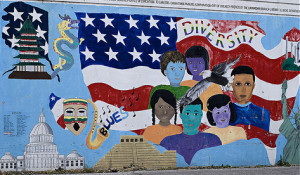
Hazleton, Pennsylvania, is a small city (population: 25,000) that once boasted a thriving coal mining industry, but today has an unemployment rate double the national one. It’s best known now as the first American city to pass a law designed to get rid of undocumented immigrants by making their lives exceedingly difficult. Hazleton approved the measure — which prevents illegal immigrants from working or renting homes there — in 2006, four years before Arizona passed its similar “papers, please” law.
On the surface, it seems that little has changed in Hazleton since the law was enacted: the New York Times summed up the situation there last spring with its headline, “New Attitude on Immigration Skips an Old Coal Town.” But there are some folks working hard to make change happen. Their leader happens to be the manager of the Tampa Bay Rays, Joe Maddon.
Maddon grew up in Hazleton, in a time when most of its residents were white ethnics, predominantly Italian and Polish Americans. Since then, the city’s demographics have changed radically. According to census data, the percentage of Latino residents has surged, rising from 5 percent in 2000 to 37 percent in 2010.
In 2008, Maddon’s cousin, Elaine Maddon Curry, helped create Concerned Parents, an organization that provides services to immigrant families in Hazleton. But as the backlash against the city’s Latino population grew, Maddon found himself frustrated by all the anti-immigrant sentiment. He came to believe that Hazleton’s immigrants, and the city itself, needed more than services. It needed to build bridges between immigrants and the native-born, whites and Latinos. It needed a real and shared sense of community.
“We’re the same, just speak a different language,” Maddon says. “The Slovak, the Polish, the Irish, the Italians — we all started the same.”
In 2010, Maddon decided “to do something to repair what has been damaged here,” and since then has joined with his cousin and other like-minded residents of his hometown to establish the Hazleton Integration Project. As part of its first messaging campaign, the group plans to set up billboards throughout Hazleton with photos of city residents of many different ethnic backgrounds, all with the same tagline: “We are from Hazleton.”
The Hazleton ONE Community Center, set to open this summer, will serve as the project’s headquarters. Besides hosting the Concerned Parents group and providing homework help and athletic facilities, the center will offer Spanish-language classes, host cultural events, and sponsor other programs designed to bring together the city’s native-born whites and (mostly) immigrant Latinos. As Bob Curry, the president of the project’s board, describes it:
Yes, we will provide particular services. But the larger mission of integration will guide us everything we do. Services are one thing. Integration is quite another.… It’s a longer-range goal.
The group’s leadership includes both whites and Latinos. Eugenio Sosa, the executive director and himself an immigrant from the Dominican Republic, explains their approach:
This is following our dream…. We are starting with the children because, you know, children do not have prejudice. They are going to be spending time together, playing together, learning together, going to each others’ houses, learning about different cultures, how different people celebrate. It is just a great opportunity.
I learned about the Hazleton Integration Project through an organization called One Nation Indivisible (disclosure: I have donated to this group), whose purpose is to “support and celebrate” efforts at inclusion and integration, in particular those focused on immigrants to this country. Their definition of integration describes exactly what is going on in Hazleton.
Integration refers not merely to the absence of physical segregation. It is an aspiration best imagined by Martin Luther King. “Desegregation,” King wrote, could be accomplished by laws, but “integration,” acknowledges a web of mutuality — a shared fate. Integration is not synonymous with “desegregation” and “diversity.” Integration requires a full acceptance, a richer coming together, a willful expansion of community circles. Our project tells many stories about what advocates call “immigrant integration.” Used in this context, “integration” does not necessarily refer to the absence of physical segregation, but to a wide variety of practices, policies, and programs that respect, welcome, and fully incorporate immigrants into the communities where they live.
Joe Maddon and his colleagues at the Hazleton Integration Project are working at a grassroots level to improve their city and overcome its ethnic divides. I can’t think of worthier goals.
Correction, June 18, 2013: This blog post originally misidentified the cofounder of Concerned Parents. It is Elaine Maddon Curry, not Joe Maddon. The text has been edited to reflect this.
Ian Reifowitz Ian Reifowitz is the author of Obama’s America: A Transformative Vision of Our National Identity. Twitter: @IanReifowitz
- Follow us on Twitter: @inthefray
- Comment on stories or like us on Facebook
- Subscribe to our free email newsletter
- Send us your writing, photography, or artwork
- Republish our Creative Commons-licensed content
